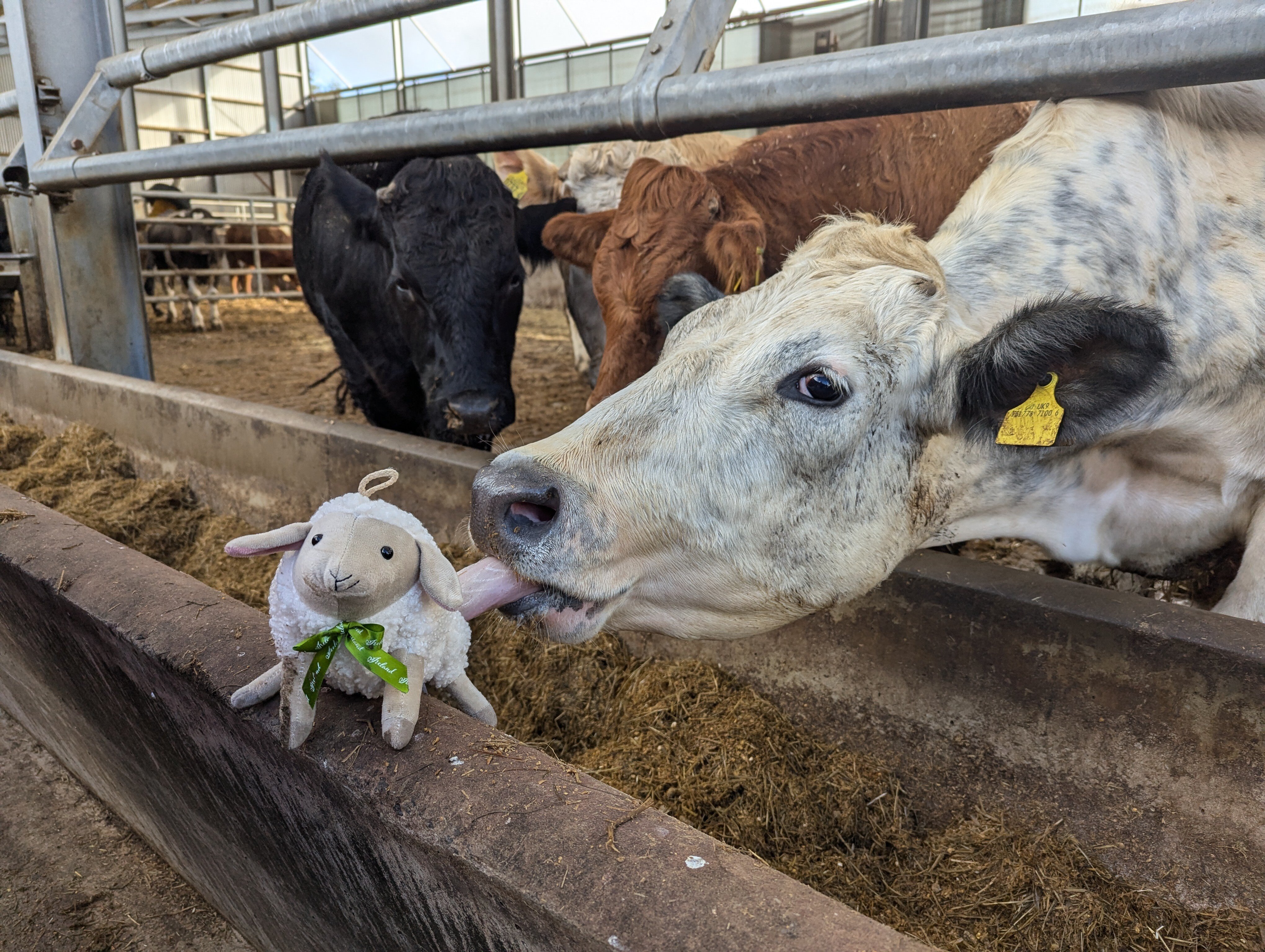Foods Connected’s Agriculture & Animal Welfare Specialist, Kate Williams, analyses the benefits of sustainability KPIs and reveals the 7 steps to follow when setting them.
Sustainability is increasingly being recognised as a key priority for food businesses around the world. It helps reduce environmental impact, improves social outcomes and builds financial security. But it is also a term used more and more without people understanding what it is really is.
So, what is sustainability?
Sustainable development is traditionally defined as the ability to “meet the needs and aspirations of the present without compromising the ability to meet those of the future”. For food production, this presents unique challenges, given the geographic disparities in food availability, population growth and increased longevity. Taking these factors into consideration, while the demand for food will increase, it is about striking a careful balance in order to try and achieve this in a responsible and sustainable manner.
As a result, food businesses are facing increased pressure both externally and internally from governments, NGOs and consumers, to ensure that food is produced sustainably – and this means considering the environment, people and animals within their supply chains. This has led to businesses across end-to-end supply chains setting sustainability targets in order to evidence and report on progress.
Why should my business set and measure sustainability KPIs?
Sustainability is no longer a good to have, it is an increasingly mandatory commitment driven by legislative, market and stakeholder considerations. Let’s assess how having sustainability KPIs in place affects different parts of your supply chain.
Why sustainability KPIs help your customer relationships
Customers require data from suppliers to help evidence their own targets and KPIs. By aligning with customer targets, you can ensure that you provide them with their required information. Furthermore, having clear sustainability targets can set you apart from competitors.
Why sustainability KPIs matter to your end consumers
Sustainability considerations have been shown to influence consumer purchasing habits. Deloitte found that 1 in 3 people have changed their purchasing habits around buying certain products or brands due to ethical or sustainability concerns and KMPG found that 54% of consumers would stop buying from a company that was found to have misleading ESG sustainability claims. Having clear and consistent KPI policies to help measure this, informs end consumers of your approach and commitment to sustainable food production.
Why sustainability KPIs influence your investors
In a recent Global Investor Survey, PwC found that 75% of investors factored how a business manages its sustainability-related risks and opportunities into their decision making. But interestingly, 94% felt that some reported corporate sustainability performance contained unsupported claims.
Why sustainability KPIs encourage employee retention
Deloitte found that 69% of employees surveyed wanted their companies to invest in their sustainability activities, while 24% of respondents had actually considered switching to a more sustainable company. This suggests that sustainability strategies increasingly have the potential to impact recruitment and retention.
So, how can we measure sustainability?
Sustainability is conventionally split into three pillars – environmental, social and economic.

But there is another factor that affects consumers – animal welfare. This then impacts each of the other pillars. Net sustainability reporting can then be considered as a combination of what (targets), how (methods) and why (analysis).
The majority of UK retailers have publicly committed to a number of sustainability targets. These include:
- Science-based targets (SBTis) such as GHG reduction targets
- Animal welfare targets including water management
- Deforestation
- Sustainable sourcing
- Food waste
- Recycling
- Energy reduction & sourcing/use of fossil fuels
- Social responsibility
These targets span not only their own business, but their supply chains. However, supply chains can be complicated. They can be affected by their visibility at customer level, location and current legislative requirements, level of integration and level of engagement. So, target setting should carefully consider what can be both measured and achieved within any given supply chain.
A number of sustainability benchmarks have also been developed to help examine progress in terms of policy commitments and associated impacts across food businesses. For animal welfare, these include BBFAW and Crustacean Compassion. Other requirements may take the form of legislative changes, such as the European Union Deforestation Regulation (EUDR), which requires all products placed on the EU market to be sourced from deforestation-free supply chains.
Regardless of how targets are set or originate there are some key steps you should follow to ensure success within your approach.
The 7 steps in target setting & KPIs
| Step 1 | Supply chain mapping | Establish full visibility of where products are coming from. You will need to map these suppliers and ensure you engage with them (either through your own relationship or that of an intermediate supplier) to collect data. |
| Step 2 | Set the target | Identify what is it you want to achieve and when. Is your target specific, realistic, measurable and time bound? What data will you need to collect to evidence this and is it possible? Have you engaged with your suppliers to notify them of this target and received engagement from them? |
|
Step 3 |
Data collection |
|
|
Step 4 |
Data validation |
|
|
Step 5 |
Data analysis |
|
|
Step 6 |
Reporting on progress |
Identify early on what data needs to be reported. Examine what each customer/ industry benchmark requires (eg measure, time period, aggregation) so your public reporting enables easy collation. |
|
Step 7 |
Review progress |
|
Key takeaways
The above steps are not always linear and may require revisiting over time. The key takeaway is to know what steps to put in place to ensure robust data collection to evidence realistic and achievable targets.
How can Foods Connected help?
Foods Connected help food businesses to collect, manage and analyse their data to make informed decisions through a range of tools and services. Our technical teams have expertise in sustainable development to help your business set the right targets and meet your reporting requirements. Please get in touch for more information on how we can help you.
Stay up to date
Stay up to date
Browse Posts
- December 2025
- November 2025
- October 2025
- September 2025
- August 2025
- July 2025
- June 2025
- May 2025
- April 2025
- March 2025
- February 2025
- January 2025
- December 2024
- November 2024
- October 2024
- September 2024
- August 2024
- July 2024
- June 2024
- May 2024
- April 2024
- March 2024
- February 2024
- January 2024
- December 2023
- November 2023
- October 2023
- September 2023
- August 2023
- July 2023
- June 2023
- May 2023
- April 2023
- March 2023
- December 2022
- November 2022
- October 2022
- September 2022
- August 2022
- July 2022
- June 2022
- May 2022
- April 2022
- March 2022
- February 2022
- January 2022
- December 2021
- November 2021
- October 2021
- August 2021
/Blog%20Headers/shutterstock_2390798777.jpg)


/Blog%20Headers/shutterstock_1927957907%20(1).jpg)
/Blog%20Headers/shutterstock_1845178195%20(2).jpg)
/Blog%20Headers/shutterstock_2473376713.jpg)
/Blog%20Headers/shutterstock_2133827717%20(1).jpg)
/Blog%20Headers/shutterstock_2247276303.jpg)
.png)
.png)



.png)
.png)
.png)
.png)
.png)

/Blog%20Headers/Meet%20the%20team%20with%20Abbie%20FergusonPNG.png)
.png)
.png)
.png)